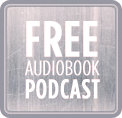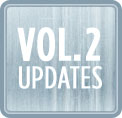Category ArchivePublishing
Publishing &Vol2 Updates 27 Jul 2013 03:15 pm by David !
BEHIND THE SCENES of the TIHYD short – with director Michael Mohan
Earlier this week, we showed the THIS IS HOW YOU DIE short film (viewable here if you haven’t seen it) at a video showcase at the Westside Comedy Theater here in L.A. We won the night! Apparently it was a competition. Hooray!
I’ve asked the film’s director, Michael Mohan, to share some BEHIND THE SCENES THOUGHTS:

Hey there! Guest blogger Michael Mohan here. I had the great pleasure of directing the THIS IS HOW YOU DIE short film that you’ve probably already seen. (If you haven’t, watch it right now! Spoilers follow.) It was just so super fun to make, and for anyone who wanted a bit more insight into the filmmaking process, I wanted to write something up to give you a little peek behind the curtain.
But first — here’s the film:
BOOM.
The Concept
Okay, so we knew there’d never be able to capture the full breadth of emotional complexity that the stories in This Is How You Die contain in a mere 5 minutes, but we could play with the sense of expectation.
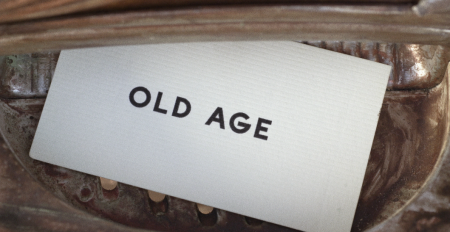
I feel like that’s one of the core things about finding out the method of how you’re going to die — if it were me, I’d never stop playing out all the different ways in which it might happen.
So here, we could not only play around with our characters’ expectations of their own deaths, and how their current lives are slightly impacted by knowing this news, but we could take it one step further, and play with our audiences’ expectations as well.
But ultimately, we just wanted it to be fun. Something that current fans would enjoy, and that maybe could help spread the word about the books to a whole new set of fans.
Visual Design
When figuring out the visual plan for This Is How You Die, I knew that each of these pieces had to function almost like a joke, where the reveal of the death worked in the same way a punchline does (or in the case of “Bear,” an anti-punchline). The setup to each joke had to be simple and clean.

So rather than doing any complex camera work, or making my directorial presence known, I knew the punchline would play best if I didn’t do anything to distract from the comedy. You know, if you think about the best comedy films, they’re always shot as simply as possible.
That said, I didn’t want it to be unspecific. My one complaint about so many comedies is that simplicity doesn’t mean that it has to look generic. And so here, I opted for a vaguely 1980’s horror vibe to guide our visual decisions.
I knew we could fully achieve that aesthetic for the limited budget, but also those films are, for the most part, very simply shot. It gives us just that little bit of texture to make it memorable, but not so much that it’s distracting. A few zooms here and there could help give it that retro self-aware sense of tension that’s also appropriate, but other than that I pretty much stayed out of the way.
“Purgatory Game Show”
That’s what we called the little intro piece for each of these segments with the silhouettes and the spotlight. We weren’t sure if the short was going to be released as five separate clips or one long clip, and so this would not only give each of the pieces a sense of continuity, but also provide a visual table of contents of the order in which they should be watched.
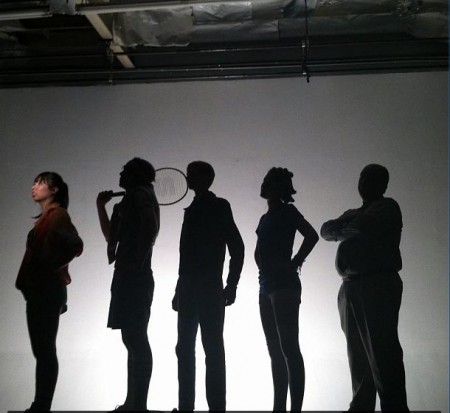
If you go back and watch it again, I especially love that with the first one, Old Age, our victim actually is able to read the words on the screen after they come up and her expression changes.
Old Age
The biggest challenge here was not the effects shot of our victim getting hit by the car, but rather the fact that there’s literally no dialogue. Our actor Anne Maddox had to convey quite a lot — the mystique of the machine, the fact that this machine is something that people take seriously, the trepidation of getting your prediction, and the relief when the prediction comes back as something seemingly good.

In screenwriting terms, this is merely “exposition” — but it’s a lot to accomplish with literally nothing but body language. But I knew that making sure this was super clear was the key towards actually understanding what this whole concept is about. It’s much harder than it looks, and I’m so glad we were working with such an experienced commercial actor as Anne, who understands the subtlety of such things.
The effects shot itself was really simple. We just hit Anne with the car. She’s OK now.
Parachute Failure
Here the goal was to just continue establishing the unexpected nature of a death prediction, and to do so incredibly quickly. This was always conceived to be the shortest one, and it clocks in at 23 seconds.

As for the effects shot — here’s how we did this. That final shot is composited from many different elements.
First off — our victim, Kevin Manwarren, was shot by himself: just saying his line, and then throwing his racket and falling to the ground. The hardest part here was making sure the tennis racket landed in a good spot.
Second off — we then had our parachutist, Jacob Womack, basically do a push up over him, capturing the frame right before he falls onto the ground and the frames after impact. We then opened his pack for the moment when the chute flies out of it.
Next, we took Kevin’s sock and shoe off and put it on a fake leg, and threw it in the air from the point of impact.
Next, we brought in the three guys, Shaun Boylan, Joey Greer, and Michael Wilkie, and set up a practical hydraulic blood cannon in the point of impact to spray fake blood onto the guys (and all over the tennis court).
No joke — after doing this we were promptly kicked out of this location. Blood was everywhere. And we just had to pack up and leave. No questions asked.
So we then moved to a nearby field and shot the parachutist against a green screen so he could be composited in the air falling from the sky onto the tennis player.

Mix all of these together, add more blood, a CGI parachute, and some cracks in the floor of the tennis court, and voila — Parachute Failure.
Hot Girl
The goal here was exactly the same as with Parachute Failure, to simply set up the game that we’re playing with the audience.

Now originally this was going to take place in that same location as the tennis court, and it was going to be a bit more surreal, with the model beautiful girl actually specifically hitting on the boy. But since we got kicked out of that location, we had to pick up those shots at a later date.
It was a blessing in disguise. One thing we all learned during this process was that the simplest ideas were the ones that won out. And here, we just needed to create the easiest milieu for this to take place in. We thought — how about a bright summer day at the beach? That’s where hot girls hang out, right? PERFECT. Also then the woman on fire — it’s slightly less random — she’s at least running towards a giant body of water.
Unfortunately, we ended up shooting on the coldest possible day in June at a grey overcast beach. No joke — it was FREEZING. In between takes, we would send the actors to their cars to blast the heat so they could warm up. In fact, you can see our actor Matthew Haddad actually physically shivering in one of the shots.

The beach was also directly west of the LAX airport, from which our poor sound mixer reminded us that there is an outgoing flight every 7 minutes.
But we got through it, and despite the fact that it’s not your prototypical beach, I’m really happy with how this turned out.
In terms of how we did the effects shot — we just lit our actor on fire. She’s OK now.
Time Travel
Ideally, now that we’ve established the trope of what these pieces are doing, we wanted to one-up ourselves. Pulling it off was not as easy.
For those of you not in the film industry — one of the biggest challenges with shooting lower-budget things in Los Angeles is finding locations. Everyone knows that when a film crew comes in, something’s inevitably going to get messed up or broken. People also know that most productions pay tons of money for locations, and don’t want to go through all the trouble for nothing.
So this bedroom location was actually the hardest location for us to find in the whole shoot, and eventually we simply had to compromise. A friend of our producer graciously allowed us to take over her apartment for an afternoon. It wasn’t quite as big as we’d have preferred, but at least it had neat looking blue walls.
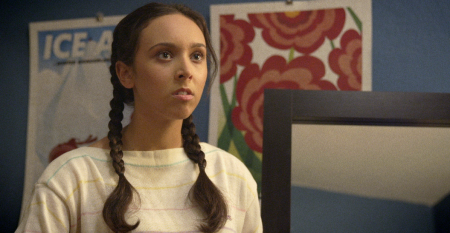
Unlike the beach, that room was sweltering. When you get six dudes and a bunch of hot lights in a room that small, you’re all right on top of each other. And while I would have preferred to just shoot normal coverage (medium shots and close-ups), I needed to give the illusion that the girls weren’t standing right next to each other, hence the mirror-tilt-up shots.
But the linchpin here is that slow-motion shot of the clock — which is, surprisingly, an effects shot. The room we were in was simply too small to shoot that practically: even if we moved the camera all the way to the very back corner of the room, when shooting on the kind of camera we shot on (a RED Scarlett), slow-motion shots require you to use less of the actual image sensor chip, cutting the amount of the room captured essentially in half.
So instead, we simply shot an empty plate shot of the wall with no clock, then separately shot a bluescreen of the clock just subtly dangling from a wire. The two were composited together.
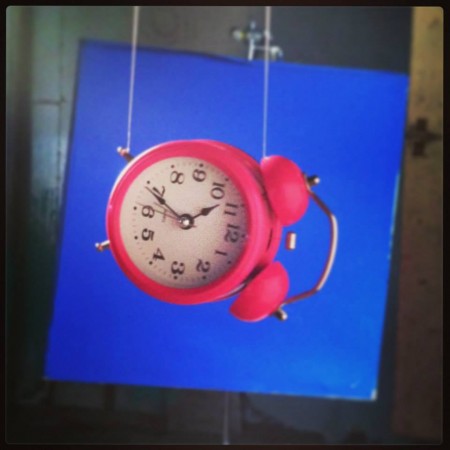
But that one shot really is the indicator for the audience to wrongly think that “Time Travel” has something to do with the clock traveling through the air, and without it, I think the entire segment falls apart.
As for the effects shot with the Civil War — we just sent actor Nicole Lvova and our camera crew back in time. The camera crew made it back. Nicole, sadly, did not.
Bear
In a way, everything leading up to the “Bear” segment is a setup of its own to a very long anti-punchline. By this point, ideally, our audience realize that we’re playing a game with them, and now they’re trying to anticipate what the twist or trick is going to be.

For instance, many people I show the piece to think there was a typo on the card, and that it was supposed to read “Beer.” Then they anticipating the beer killing him. Amazing.
But ideally when you get to that shot of him opening the fridge, we really wanted the audience to (a) think a bear might jump out of the fridge, and then (b) feel silly for thinking that a bear might jump out of the fridge. If that happened to any of you, that makes us happy.
Our second day of shooting was comprised of the scenes in the domestic kitchen, as well as everything that took place in the woods. It was the first day on any shoot I’ve been on where literally NOTHING HAPPENED in any of the scenes. That’s the incredible thing about horror movies: once you establish a threat, the audience is on the edge of their seat, simply waiting for something to happen. That’s also why most horror movies are SUPER BORING the second time you watch them. (At least in my opinion.)
As for the effects shot with the bear coming out — this is where most of our money went. The bear is 100% CGI. But we had to bring in a real bear to be able to digitally map the texture of its fur. And then after studying grizzlies in the wild, actor Andy Serkis (uncredited) worked with Digital Domain for the motion capture. His performance, coupled with the digital CGI bear, is what created that movie magic.

The Music
One thing about the music. Prior to the shoot, I had this little melody stuck in my head. I would whistle it on set, and hum it in my head during certain takes. In prep, there were a few moments where we used a metronome to time lighting cues to the changing BPM of this imaginary song.
After returning some equipment on the last day, I swung by Guitar Center to see if I could actually play the melody on a synthesizer. If the song in my head could actually turn into a tangible actual song. Surprisingly, I was able to figure it out, so I videotaped my fingers on the keys by holding my phone in my mouth. Then came home and transcribed it. Below is what I sent to Hrishi, our composer. You can take the kid out of the marching band, but you can’t take the marching band out of the kid.

I really hope you enjoyed our film. If you have any questions about it, I can be found on Twitter at @michaelmohan or at facebook.com/michaelmohan. You can also catch my other work at michaelmohan.com.
Working with Malki and crew on this silly little short film, everyone really went the extra mile to make it as awesome as humanly possible, and I know that so much love and thought went into the book as well. If there’s any group of artists worth supporting it’s them. I’m really pleased to have been a part of it all!
Thanks for watching,
mm
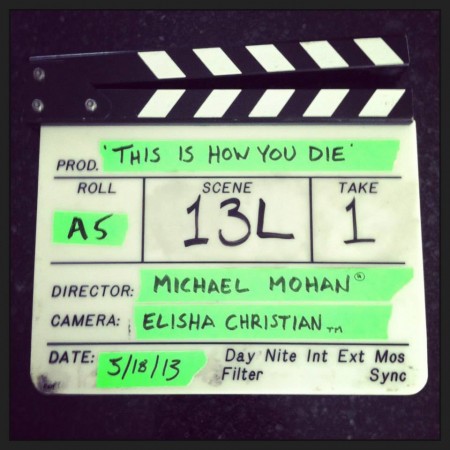
FULL CREDITS BELOW:
Continue Reading »
Publishing 31 Jul 2011 06:45 pm by Matthew
So long, Borders…
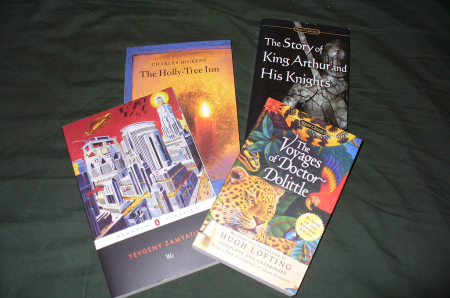
I stopped by a Borders this afternoon and bought what will probably be the last books I ever buy in a Borders store. There’s a lot that can be said about a major bookstore chain going out of business, and little of it is optimistic. There’s a case to be made that this is bad news for publishers, writers, readers, and even other booksellers — at least in the short term.
Still, I bought four books at the Borders I visited. Not out of any illusion that this would benefit anybody except the liquidators — it’s too late for that now — but because I wanted those books, and a 20% discount is better than nothing. The sad truth is that since Borders is never coming out of bankruptcy, there’s very little chance that any of the money I spent today will find its way to the publishers or authors. Admittedly, that’s a bummer.
But reading can be an expensive hobby, especially if you like to own your own books. Cheap or free books are the fuel for many a book-a-week habit that could never be supported otherwise. And publishers and authors tend to be an understanding lot. Despite the apparent conflict of interest, I suspect most writers get as much of a kick out of seeing their book in a library as they do seeing it in a bookstore. (I know that I do.)
So head on out to your local Borders before it’s gone forever. If you can get a good deal on Machine of Death, I hope you’ll take advantage of it. If not, then there’s always the free PDF or the local library. And you might find us cheaper on Amazon or Barnes & Noble anyway.
No one in the United States is in danger of losing access to books. The Internet makes it easier than ever for people everywhere to get their hands on books of all kinds, usually for a pretty reasonable price. But the number of people who no longer have a local bookstore is going to increase substantially when Borders closes its doors. So if you like bookstores, then I urge you to seek out whoever is selling books in your area — even if it’s only Walmart. If you don’t like the set-up or the selection, let the folks running the store know what it would take for you to shop there.
And, of course, keep your eye out in case anything comes along to replace those shuttered Borders stores. In the long term, this could be an opportunity for independent bookstores to reclaim some of their old turf. If that ends up happening, we should all be ready to give them the welcome they deserve.
Publishing 28 Apr 2011 06:43 pm by Matthew
A peek at our sales numbers (pt 2 of 3)
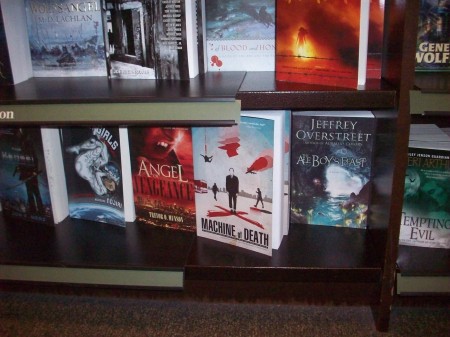
Last week, I made reference to our decision (made almost immediately after we launched) to strike a deal with a distributor to get our books into bookstores across the U.S. and Canada. At the time, it seemed like an obvious thing to do. We had never really thought about what we were doing or what it meant to be a self-publisher. We just knew that books are sold in bookstores, and we had a book to sell.
We’ve learned since then that there are a lot more options than that, and that print distribution to bookstores is fraught with uncertainty and peril. It turns out that putting a self-published book in Borders and Barnes & Noble is like setting out to sail the Atlantic in the Santa Maria. (Have you guys ever seen a replica of the Santa Maria? It was a tiny ship!) And though I still think that decision was the right one, it was — at the time — the result of 50% audacity and 50% naiveté.
Continue Reading »
Ebook &Publishing 20 Apr 2011 08:45 pm by Matthew
A peek at our sales numbers (pt 1 of 3)

Flickr photo by Jenn Mau
Not long ago, David wrote a post in which he talked about how much he likes to get things done. And I can vouch that David is in fact a consummate do-er. A lot of the cool things related to Machine of Death have happened precisely because of his willingness to jump head first into projects, and Ryan and I have been happy to jump in behind and support him any way we can.
I often like to think back to the moment, about four days after we hit #1 on Amazon, when David told us that our agent had negotiated a deal with PGW to distribute Machine of Death to bookstores across the US and Canada. “To do that, we just need to sign the contract and print enough books to stock all those stores,” David said. “So to fund that we’ll each need to immediately fork over A SUM OF MONEY THAT COULD EASILY BUY YOU A NEW CAR but it’ll be worth it in the long run!” It still staggers me that there were three guys on the planet who were willing to pony up the cash needed to make it happen without a second thought.
Well, almost without a second thought. I admit that I did some quick calculations, literally on the back of an envelope that was (and still is) sitting on my desk, just to figure out how bad it would be if the whole thing went belly-up the day after I wrote the check. We’ve already sold ABOUT THIS MUCH, but won’t see any money until A LITTLE WHILE, and David wants me to pay HOW MUCH MORE? And, even if this works, we’re likely to get paid back A LONG TIME FROM NOW? Well, okay! I mean, it looked okay but it’s not like we had a business plan or anything. Business plans take too long to put together!
Yet despite this, I’m not the same kind of do-er that David is. I’m a lot more comfortable planning, preparing, reflecting, and measuring than I am rushing into things. If it were left entirely up to me, Machine of Death would be one-tenth as awesome as it is today.
On the other hand, I hope I have my uses too. At the end of last year, David handed me the electronic equivalent of a shoebox full of receipts, and I clicked around Wikipedia until I remembered enough about accounting to put them into some semblance of order. (We have a real bookkeeper who takes care of this now, thank goodness.) And for the past several months I’ve been tracking our sales, week-by-week, for all the various channels and formats that we’re available in.
This is the stuff I really enjoy. I’ve worked in direct marketing for the past nine years (still do, in fact), so I’m profoundly uncomfortable if I can’t see where I’ve been, where I am now, where I had hoped to be, and where I hope to go. Above all, Machine of Death is supposed to be fun, so I try to be more laid-back about it than I am about my “real job”. But still, I’m checking numbers and updating spreadsheets a few times a week. (Remember: This is what passes for fun with me.)
Over the past five months, we’ve amassed a pretty interesting data set — a tiny piece of which was already shared on this blog. I don’t know how actionable any of our data will be to anybody else since our sample is a single, uncommonly successful book. We’re not like most self-publishing writers since we do most of our sales in print — and a big chunk of those in bookstores. Meanwhile, we’re not really a small press either because we don’t have a calendar full of upcoming book releases. I have no reason to believe that any part of our experience is “normal” or easily repeatable by anybody else (or even by us).
Today, I’ll just share you with a single graph that shows our print sales vs. our ebook sales, month-by-month, since we launched. I’ll be getting into more detail about both of those formats in the next few days , but you can see that so far about 70% of the books we sell are good old-fashioned blocks of paper glued between sheets of cardboard.

One thing to note — partway through March, we dropped the price of our ebook to $5.99. As you can see, the split didn’t change much despite the drop in price, but it’ll be interesting to see if it does in the months to come. Personally, I don’t expect the price change alone to have much impact on what proportion of print books and ebooks we sell. For most readers, the choice doesn’t seem to hinge on a question of a few dollars of savings for one version or another. Instead, readers buy the version they prefer. Lowering the price on the ebook certainly generated publicity and a short-term bump in sales of ebooks. But publicity is publicity, and even talk about our ebook can (and does!) drive sales of the print edition.
I’ve been told that this 70% / 30% split is actually more weighted towards ebooks than the industry average. I haven’t looked for the industry numbers myself though, so I don’t know if this is actually true or not. And even if I did find the numbers, I still likely wouldn’t know how they were calculated or what they really represented. (I’d love to hear from anybody who has both an “industry average” and information on how it was calculated.)
“Print” and “ebook” are extremely broad categories that cover lots of different things, and somebody else’s “print” and “ebook” categories may not be similar to ours at all. (Our numbers are fairly straightforward if anybody wants to know what they represent. From October to February, “print” is a trade paperback retailing online and in bookstores at $17.98 — though often discounted by retailers. For the same period, “ebook” is the same title sold at Amazon, Barnes & Noble, and Apple for their respective devices for $9.99. In March, things change a bit so if you’re a stickler about clean data then you might want to ignore that month.)
To be honest, it’s not terribly important to me whether I ever know enough about the big pot of gumbo called “industry averages” to be able to compare Machine of Death to any other numbers. It doesn’t really matter whether I find out we’re selling more ebooks than other folks, or fewer, or just the right amount. I mean, it might be interesting to know, but there’s not much we can do about it. The proportion of ebooks vs. print books is driven far more by consumer preference than by anything we have control over.
I said before that we’re neither the typical “self-publisher” nor the typical small press. The best way I can put it is that we’re three guys who put out a book that lots of people have told us they really enjoy, and which we think lots more people would probably enjoy too. Our mission, as I see it, is two-pronged. First, to help new readers discover how great the stories in this book are. And second, to keep delivering cool stuff to the people who already know that. Right now, both print and ebooks (and both online retailers and brick-and-mortar bookstores) are helping us achieve both parts of our mission, so we’re going to keep investing in both of them for the foreseeable future.
We don’t pretend to be prophets or even savvy industry observers, so we don’t know when (or if!) ebooks will make print books irrelevant. Right now, people are still buying and reading both in significant numbers. Luckily, we happen to think that both print books and ebooks are supremely cool when they’re done right. So all we care about is doing them right — putting the best content in the best possible package, whether it’s a trade paperback, a hardcover, an ebook, or a podcast.
Heck, the podcast is a perfect example of how little we care about the outcome of any format war. Audiobooks account for a tiny sliver of the book market — something like 1% or 2% — but David has spent an enormous amount of his time and energy making our podcasts the best they can be. And then we give them away for free, because we just think it’s cool that they exist. (Yes, we hope new readers will discover us through the podcasts, but we also hope existing fans are enjoying them too!) If we really are witnessing the death of print books and bookstores, we’ll keep on producing print books for the same reason. Even if almost nobody wants to read them, we’ll still think it’s awesome to have them around, and that is totally good enough for us.
So today, 30% of our sales are ebooks and 70% are print. I don’t know what this means for the industry, but it’s really interesting information for us. If you look at total sales for the entire lifetime of Machine of Death, ebooks actually appear much less significant. Overall, they only account for about 15% of total sales. This is because October and December (the months with the lowest proportion of ebook sales) were also the months in which we sold the most books total. So when print was winning, it was really really winning.
Lifetime numbers are usually what I look at, so this month-to-month view was kind of an eye-opener to me. Print was a big part of our initial publicity push, but ebooks are clearly really important for our continuing mission. Almost one-third of new readers today encounter our book electronically. So the lesson for me is that even though the numbers don’t look that big yet, we can’t afford to look at our ebooks as second-tier products. They have to be able to delight our readers just as much as the print edition does!
I know that “ebooks are more important to ongoing sales than expected” is not exactly the sexiest conclusion to come to. In fact, it’s downright small-minded and nerdy. No doubt it would be way cooler if I could spin some grandiose prediction from our sales figures so far. For instance, if I could identify some trend and use it to name a date when ebooks will surpass print books in sales. But even if I could do that, it wouldn’t help us do a better job. At best, it’s a distraction. At worst, it might encourage us to think of print as an already-cooling corpse, and that would be a huge disservice to thousands of our readers who still consider print alive and well.
So, no big predictions here! Just a few numbers and some thoughts about what they might mean. If you’re not too disappointed, stay tuned and next time I’ll get into some more detail about our print sales.
Ebook &Publishing 10 Feb 2011 04:24 pm by David !
MOD on iPad! PLUS: Ebook roundup
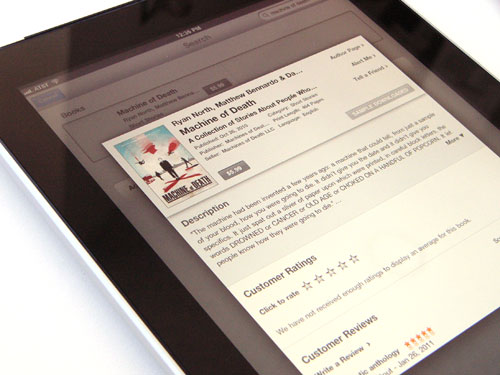
Machine of Death is now available in Apple’s iBooks! You can search for it in the iBooks app on your iPad/iPhone/iPod Touch, or here’s a browser link (caution: the link will ask you to launch iTunes).
When everything exploded for us back in October, we were approached by not only print publishers, but also audio- and ebook publishers. We’ve explained already how we turned down inquiries from larger publishers for reprint rights to the book, and since we had planned all along to create a free podcast of our book, as well as give away the free PDF, that torpedoed any chances to partner with any professional audio- or ebook publisher as well. They would have insisted on exclusivity, which we weren’t willing to provide.
So, after hearing loud and clear from you that you’d like a Kindle version of MOD, we started looking into publishing ebooks ourselves. This was before we’d even released the free PDF, so the genie was still technically in the bottle — and we heard from ebook publishers and distributors warning us what we’d be missing out on by turning down their terms.
“We reach thousands of ebook sales partners,” they said. “Even if you do a Kindle version yourself, that’s only one of thousands of sales channels.”
“Are there really thousands of ebook sales channels?” we responded. “Why have we never heard of any but about five?”
Ultimately, we decided that while there might be thousands of ebook sales channels, we only cared about a couple of them, and we could manage a couple of them on our own. We ended negotiations with ebook companies, released our PDF, and looked into selling ebooks of our own in the few sales channels that make up the majority of the market.
Which ebook marketplace is doing the best?
Kindle versions have been our biggest sellers by far. I tried to find some survey data on the Kindle’s market share: last August an Amazon spokesman claimed they had 70 to 80 percent of the ebook market; those numbers were then challenged by publishing industry professionals who assigned Amazon 61%, followed by 20% for B&N’s Nook, and single-digits for everyone else.
The study reported results from very early in the iPad’s existence, so the landscape has surely shifted by now — in fact, Apple claimed 22% of the ebook market share as long ago as June 2010. The numbers get another crunch here with this startling opinion:
Several Publishers confirmed earlier this year and at the end of last year that Amazon had around 90% market share… The likeliest possibility is that not only did Amazon manage to sell Kindles it also managed to get a large chunk of iPad owners’ ebook purchases via Kindle for iPad.
Let’s see if our (limited, so far) experiences agree.
A breakdown by ebook platform
These are numbers from January 2011 — so the October blitz and the subsequent holiday season aren’t included. It’s still not a huge sample size, but it’s the closest to “typical” we’ve probably got so far.
Although Amazon announced last month that it’s now selling 115 ebooks for every 100 print books, we’ve still mainly sold print books — in January, at least 74% of all copies of Machine of Death sold were print books, and we know that number is low because it doesn’t include Canadian or all retail-store sales. We do, however, have accurate numbers on ebook sales:
• Kindle sales accounted for 84.5% of all ebook sales in January
• Nook sales accounted for 10.4% of all ebook sales in January
• The remaining 5% were mainly ePub sales through our site, although a few iBooks sales are recorded there too (the iBooks version only went live at the very end of January).
We abandoned our Kobo application after hearing of Borders’ financial troubles. We also have submitted our file to Google’s new ebooks program, but thanks to a hilarious comedy of errors that could only be resolved by us mailing them a CD-ROM (what year is this?) we are currently still “processing.”
This is only one data point, but the breakdown seems to be roughly shared among at least one other author who’s been kind enough to share his own experience:
Now, I’m not James Patterson, but I have sold several thousand copies of my e-books this year, and they are available at Amazon, B&N, Kobo, and Apple (also Sony, but too recently for me to have reliable sales data). And my figures back up Amazon’s; in fact, I sell more than 75% of my e-books through Amazon. Source: David Derrico
Advantages of a broad approach
We’re happy we took the reins into our own hands and didn’t bother paying an ebook distributor a commission to get us into 997 other ebook portals — I doubt any few increased sales would have covered what we’d lose to the commission. As long as there are a few market leaders, it’s easy for us to make most everybody happy: most of you who read ebooks have Kindles, but if you have a Nook or iPad, we’ve got you covered too. The Stranger’s Paul Constant also points out some advantages to the ePub format on the Sony Reader, and we’re happy to sell you a DRM-free ePub if you want one.
It’ll be interesting to watch over time if our ebook sales climb (or print sales decline) to move more toward parity with Amazon’s overall ebooks-vs-print-books ratio. Of course, that ratio is aggregate; it doesn’t address individual books. Maybe they’re selling 115 copies of every hardcore-erotica ebook for one each of every 100 detective novels.
Maybe —
maybe what we need to publish next is a hardcore detective erotic e-novel



